ASTR 1230 (O'Connell) Lecture Notes
7. ASTRONOMICAL IMAGING
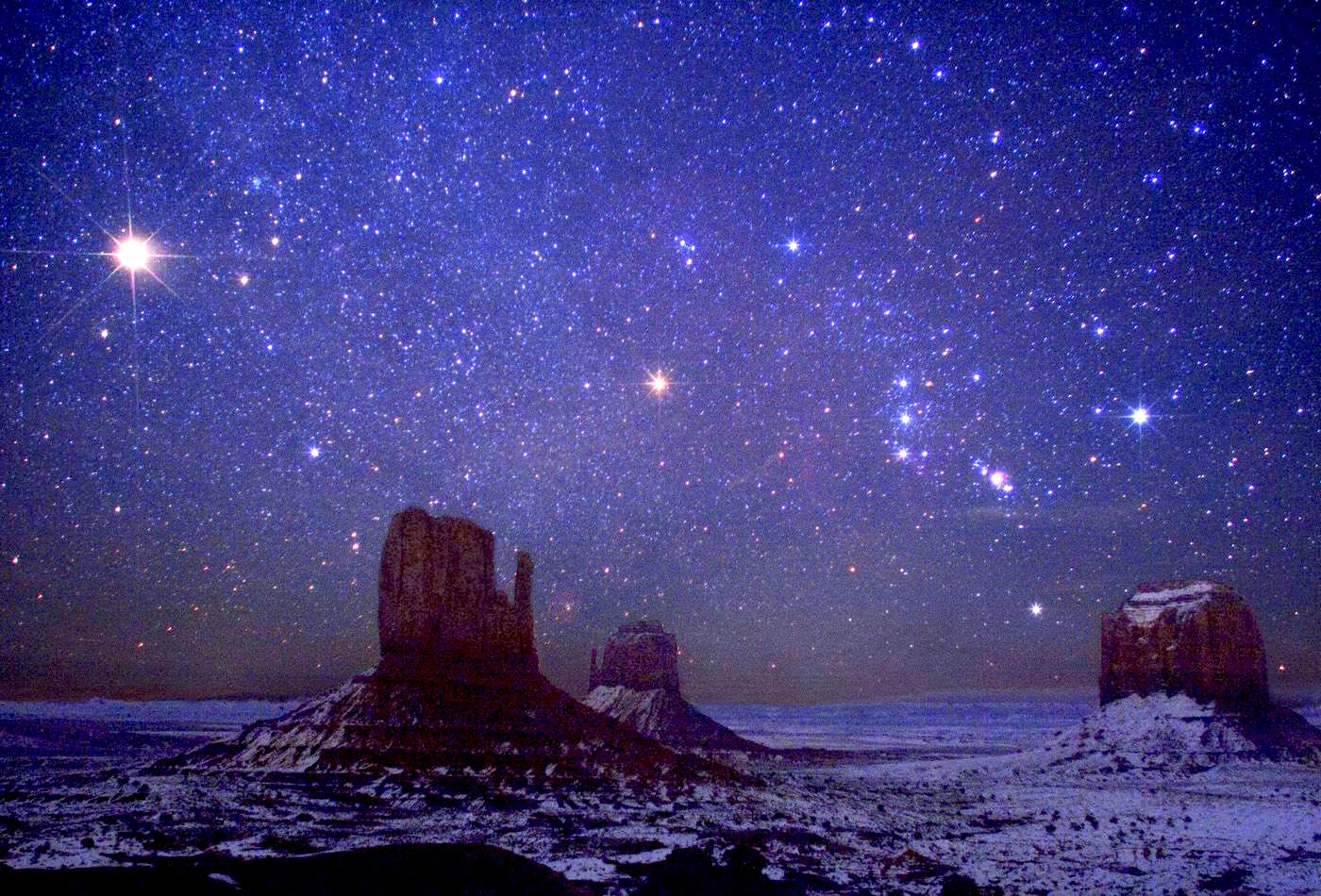
Orion and Mars over Monument Valley (Wally Pacholka)
A. INTRODUCTION
Astronomers have developed a wide array of ingenious instruments for attaching to telescopes in order to make measurements of the sky. For 270 years, the human eye was employed exclusively as the detector (more details on the performance of the eye can be found here). Modern instruments, however, almost exclusively use other kinds of detectors. The kind of instruments used depend on the particular band of the EM spectrum for which they are designed. Entirely different technologies are used in the radio region, for example, than in the optical band. Here, we discuss the most widely-used kind of optical band equipment and detectors: imagers and CCDs.B. ASTRONOMICAL IMAGERS (CAMERAS)
In order to convert a telescope into a camera, all you have to do is place a photosensitive detector (film or other) in the focal plane of the primary optics and add a shutter and filter wheel. No eyepiece or other optical device is needed, although most professional cameras do employ additional optics to produce better images over wide fields of view or to partially correct seeing blur, for instance.PHOTOGRAPHY
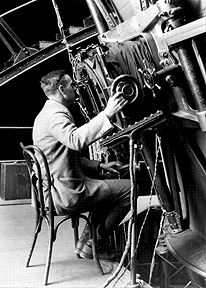
-
(i) First, it provided permanent records of
observations.
(ii) Second, it permitted very long exposure times and hence
the detection of faint objects far beyond the capability of the human
eye. Under dark conditions, the eye integrates a light signal for at
most a few tenths of a second. Film can integrate the signal for
many hours (even up to a week), allowing detection of
sources thousands of times fainter than possible with the eye at
the same telescope.
(iii) A third important, if less basic,
property is that film can be made sensitive to a much wider range
of EM wavelengths than is the eye.
- The illustration below shows electron ejection from a metallic
surface, but the effect is important and has different manifestations
(e.g. "photo-conductivity") in a wide variety of materials. The
photoelectric effect provided definitive evidence for the existence of
EM photons --- i.e. packets of EM energy that behave like particles,
schematically shown in the illustration --- and Albert Einstein
received the Nobel Prize for his interpretation of the effect.

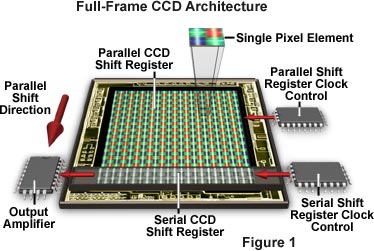
ELECTRONIC IMAGING AND CCDs
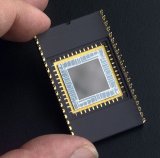
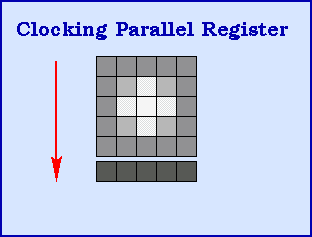
-
(i) They are highly
sensitive, with peak quantum efficiencies over 80%. This means
they can detect much fainter
sources in a given exposure time than can film.
(ii) They are highly linear, meaning
that their response is directly proportional to the EM flux deposited,
and they can be accurately calibrated.
(iii) They immediately convert a scene into a digitized computer
image, which can then be further analyzed by image
processing software.
CCD's have now almost completely replaced film in professional
astronomy.
- The requirement for low dark current while making long exposures
is the reason that inexpensive "snapshot" mass market digital cameras
do not work well for most astronomical applications. Better ones, e.g.
single-lens reflex designs with large pixels and small dark currents,
are more satisfactory. The high-quality CCD detectors used in professional
observatories typically cost over $100,000 and must be
custom-fabricated.
COLOR IMAGING
- The colors in the combined image do not necessarily correspond to what you would see with your eye; and they are often deliberately exaggerated ("pseudo-color") to bring out fine shading or physically significant details.
- One standard technique is to use narrow band filters to isolate certain emission lines, characteristic of hot atoms of certain elements (e.g. hydrogen, oxygen), to show the distribution of different phases of hot gas. An example of the compositing process is shown here.
- Below is an extract from a 3-color image of the Rosette Nebula
taken at the Kitt Peak National Observatory with a mosaic CCD camera
containing 8450x8450 pixels. The image was derived from 3
individual images with filters centered on emission lines of hydrogen
(coded red), sulfur (blue), and oxygen (green). Click for a
full-frame version.
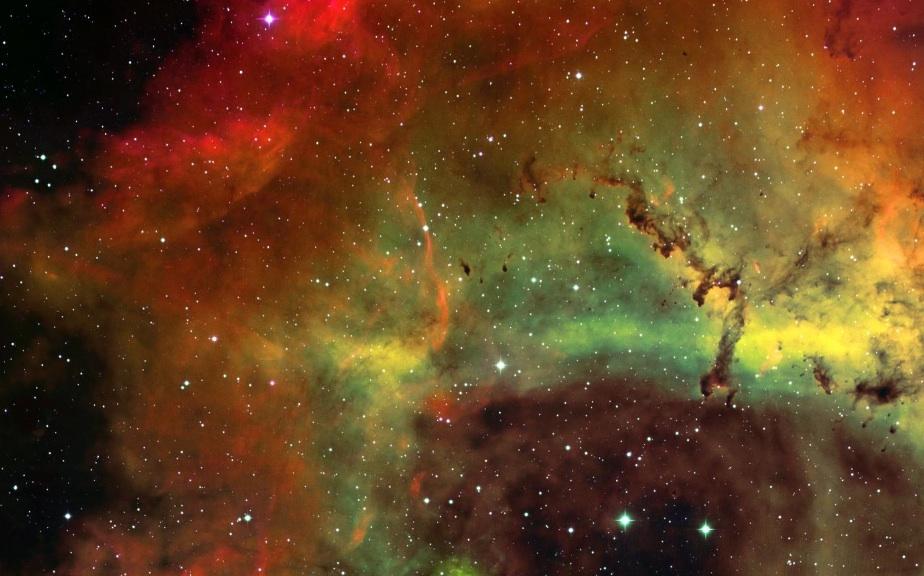
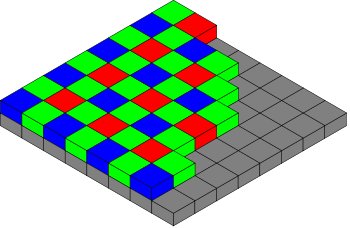
C. SKY SURVEYS
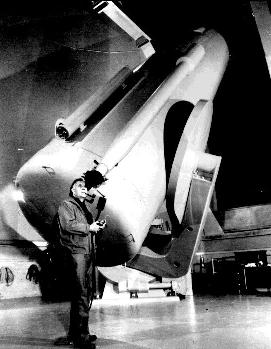 One of the most important tasks for astronomical imagers is simply to
map the sky---i.e. to find out what's there. Systematic,
telescopic large-area surveys began over 200 years ago with, for
example, the New General Catalog (NGC) of 7000 extended
objects (star clusters, nebulae and galaxies) by Herschel and his sons
(pre-photographic). The photographic Henry Draper Catalog of
objective prism spectra for 300,000 stars (ca. 1900) was immensely
valuable in clarifying the physical nature of stars and stellar evolution.
With the development of large telescopes, astronomers realized they
needed very sensitive, all-sky imaging surveys, made with
specialized telescopes. The modern prototype was the
Palomar Observatory Sky Survey (POSS), completed in the
1950's with a specialized wide-field photographic telescope,
the 48-in Schmidt.
This obtained matched photographs with blue and red filters on large
14-in plates with fields 6 degrees on a side. It recorded stars to
about 20th magnitude. At right is a picture of Edwin Hubble guiding
the 48-in Schmidt.
Several follow-up surveys, also with large format photographic plates,
were made. The whole sky has now been mapped to about 20th
magnitude. All of this material has been converted to digital format
for computerized retrieval.
Emphasis has now shifted to all-electronic surveys, which
instantly produce digital output. All-sky maps have also been made to
various depths in a number of other EM bands, from radio to gamma ray.
Useful Web sites:
One of the most important tasks for astronomical imagers is simply to
map the sky---i.e. to find out what's there. Systematic,
telescopic large-area surveys began over 200 years ago with, for
example, the New General Catalog (NGC) of 7000 extended
objects (star clusters, nebulae and galaxies) by Herschel and his sons
(pre-photographic). The photographic Henry Draper Catalog of
objective prism spectra for 300,000 stars (ca. 1900) was immensely
valuable in clarifying the physical nature of stars and stellar evolution.
With the development of large telescopes, astronomers realized they
needed very sensitive, all-sky imaging surveys, made with
specialized telescopes. The modern prototype was the
Palomar Observatory Sky Survey (POSS), completed in the
1950's with a specialized wide-field photographic telescope,
the 48-in Schmidt.
This obtained matched photographs with blue and red filters on large
14-in plates with fields 6 degrees on a side. It recorded stars to
about 20th magnitude. At right is a picture of Edwin Hubble guiding
the 48-in Schmidt.
Several follow-up surveys, also with large format photographic plates,
were made. The whole sky has now been mapped to about 20th
magnitude. All of this material has been converted to digital format
for computerized retrieval.
Emphasis has now shifted to all-electronic surveys, which
instantly produce digital output. All-sky maps have also been made to
various depths in a number of other EM bands, from radio to gamma ray.
Useful Web sites:
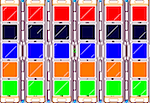
- The Skyview Virtual Observatory (retrieve images of sky in all EM bands from radio to X-ray)
- The Sloan Digital Sky Survey. The prototype optical-band electronic survey, with a camera employing a total of 54 CCD arrays, the most sophisticated CCD mosaic assembled to date. The camera layout is shown at right (click for enlargement). The SDSS has cataloged about 500 million cosmic objects to magnitude 23 and obtained spectroscopy of about 1 million.
- The 2MASS All-Sky Infrared Survey. A survey of the entire sky (with 2 telescopes) in the infrared bands between 1.0 and 2.5 microns wavelength. Mike Skrutskie (UVa) was Principal Investigator for the survey. See Lecture 6 for an all-sky image created from the survey.
D. Amateur Astrophotography
With modern digital equipment and software, amateur astronomers and landscape photographers have produced many magnificent pictures and videos of the night sky. It is easy to get started if you are interested in trying this yourself. There are many excellent websites offering tutorials on astrophotography or examples of images made with small telescopes and inexpensive CCD/CMOS cameras. Some good ones are listed at the bottom of this page and on the ASTR 1230 Links page. Here's an example image of the "Horsehead" Nebula from Robert Gendler: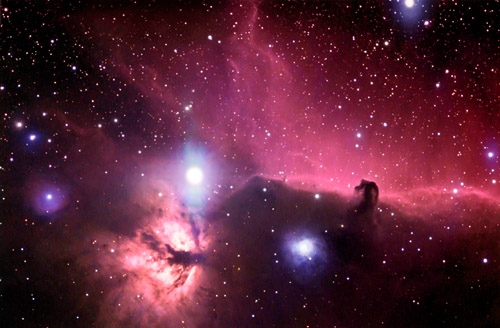
Assignment:
- Download, print, and read the webnotes for this lecture.
- Optional reading: 7.1 Modern Observational Astronomy and 7.2 Astronomical Spectroscopy.
- Take the Review Quiz for week 8 on Collab.
- You should finish Lab 3 and move on to Lab 4 at the earliest opportunity.
- The Midterm Exam is Monday 10/31. See the
Exam Prep page for helpful hints
and a review of important topics.
- For all interested students, there will be a REVIEW for the exam
on Sunday, 10/30 at 4 PM in Astronomy 265.
-
Lecture Supplement 7.1
on Modern Observational Astronomy
Lecture Supplement 7.2 on Astronomical
Spectroscopy
Orientation for ASTR 1230 Astrophotography
Lab (Abel Yang & Rachael Beaton)
Nice examples of astrophotography (telescopic and not):
- Astronomy Picture
of the Day---best collection of professional and amateur images, a new
one every day
- The World
At Night---image and video compendium site
- AstroPics ---images
by Wally Pacholka
- The Universe in
Color---images by Robert Gendler
- Astrophoto.com images by Tony & Daphne Hallas
-
The Human Eye as a Detector (R. O'Connell)
Introduction
to CCD's UVa ASTR 5110 (R. O'Connell)
Introduction to CCD's (G. Bothun, Univ. of Oregon) Astrophotography (Jerry Lodriguss)
Cambridge in Colour (Digital Photography Tutorials) (Sean McHugh)
Digital Astrophotography Bibliography (David Haworth, 2009)
Digital SLR Notes (Michael Covington)
Tutorial on Astronomical Image Processing using the "trillion-pixel" Sloan Digital Sky Survey dataset
YouTube video showing how Hubble Space Telescope color images are processed
More information on atomic physics & EM radiation (ASTR 1210, R. O'Connell)
 Previous Lecture
Previous Lecture
|
 Lecture Index
Lecture Index
|
Last modified January 2021 by rwo
Rosette nebula image taken by T.A.Rector, B.Wolpa, and M.Hanna, with the KPNO 0.9-m Mosaic Camera (copyright © AURA/NOAO/NSF). CCD transfer animation by C. Tremonti. Horsehead Nebula image by R. Gendler. Text copyright © 2001-2021 Robert W. O'Connell. All rights reserved. These notes are intended for the private, noncommercial use of students enrolled in Astronomy 1230 at the University of Virginia.